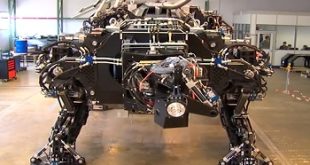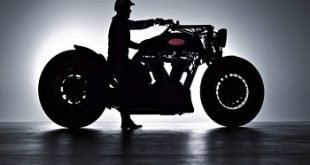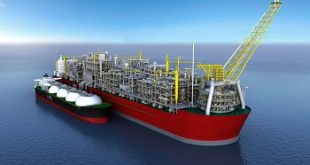In the world of civil engineering and construction, few machines seize the creativeness pretty like Big Bertha. Named after the German World War I howitzer, this large tunnel boring computer (TBM) has became what was once as soon as a painstaking and risky procedure into a surprise of present day engineering. Capable of boring thru earth and rock with unheard of effectivity and precision,
Big Bertha has revolutionized the development of tunnels, making the once-daunting mission of subterranean excavation appear like child’s play. This article explores the history, design, operation, and have an impact on of Big Bertha, highlighting how it has changed the panorama of tunnel construction.
Historical Background
The Evolution of Tunnel Boring
Tunnel boring has a wealthy records courting returned to historic instances when guide labor and rudimentary equipment were used to carve passages via mountains and under rivers. The creation of industrialization in the nineteenth century noticed the introduction of mechanical drills and explosives, which expanded effectivity however nonetheless posed widespread dangers and challenges.
The thinking of the contemporary tunnel boring computer emerged in the mid-20th century, with early fashions designed to automate and streamline the excavation process. These early machines laid the groundwork for the improvement of greater state-of-the-art and effective TBMs, culminating in the advent of Big Bertha.
The Birth of Big Bertha
Big Bertha was once commissioned by means of the Washington State Department of Transportation (WSDOT) for the Alaskan Way Viaduct alternative tunnel assignment in Seattle. Manufactured through Hitachi Zosen Corporation in Osaka, Japan,
Big Bertha used to be designed to be the biggest TBM in the world at the time of its construction. Launched in 2013, this behemoth computing device was once tasked with developing a tunnel to substitute the ageing and earthquake-prone viaduct that ran alongside Seattle’s waterfront.
Design and Structure
Size and Scale
Big Bertha measures an stunning 57.5 toes (17.5 meters) in diameter and 326 toes (99 meters) in length, making it one of the greatest TBMs ever built. Weighing about 6,700 tons, the computing device is a testomony to the developments in engineering and manufacturing required to create such a large piece of equipment.
Mechanical Components
Big Bertha includes a number of fundamental elements that work in unison to bore via the earth:
– **Cutterhead**: The the front of the computer aspects a rotating cutterhead geared up with disc cutters and scrapers that wreck and cast off soil and rock.
– **Shield**: The defensive metal shell that encases the machinery, making sure the steadiness of the tunnel face and presenting a protected working surroundings for operators.
– **Conveyor System**: A sequence of conveyors that transport excavated cloth from the cutterhead to the rear of the machine, the place it is eliminated from the tunnel.
– **Grippers and Jacking System**: Hydraulic grippers and jacks that anchor the desktop and propel it ahead as excavation progresses.
– **Back-Up System**: An array of assist gear trailing at the back of the shield, which include manage rooms, electricity supplies, and air flow systems.
Advanced Technologies
Big Bertha is outfitted with brand new applied sciences to beautify its overall performance and safety. These consist of state-of-the-art preparation structures that make sure particular navigation, real-time monitoring structures to song computer performance, and automatic controls that enable for environment friendly operation with minimal human intervention.
Operation and Functionality
Boring Process
The operation of Big Bertha starts with the rotation of the cutterhead, which breaks and gets rid of the earth in its path. The excavated cloth is then transported with the aid of the conveyor device to the rear of the machine, the place it is loaded onto vehicles or conveyor belts for elimination from the tunnel.
As the cutterhead advances, the hydraulic jacks push the computer forward, whilst the grippers anchor it in place. This non-stop procedure lets in Big Bertha to development regularly via the earth, developing a secure tunnel lining as it strikes forward.
Segmental Lining Installation
One of the key facets of Big Bertha is its capability to set up precast concrete segments to structure the tunnel lining as it advances. These segments are positioned in role via the machine’s erector arm, developing a impenetrable and secure tunnel structure. This simultaneous excavation and lining method notably speeds up development and enhances the structural integrity of the tunnel.
Efficiency and Safety
Big Bertha’s superior plan and automation have revolutionized tunnel boring with the aid of dramatically enhancing effectivity and safety. The desktop can bore via a range of soil conditions, which includes clay, sand, and difficult rock, at a fee of about 35 toes (10.7 meters) per day. This velocity is a massive enchancment over ordinary methods, which frequently worried slower development and greater dangers for workers.
Impact on Tunnel Construction
Seattle’s Alaskan Way Viaduct Replacement
The most high-profile venture undertaken by way of Big Bertha used to be the Alaskan Way Viaduct alternative tunnel in Seattle. The assignment aimed to change the seismically susceptible viaduct with a safer, underground alternative.
Despite encountering great challenges, consisting of a two-year hiatus due to mechanical issues, Big Bertha effectively executed the 1.7-mile (2.7-kilometer) tunnel in 2017. The tunnel opened to site visitors in 2019, marking a fundamental milestone in Seattle’s infrastructure development.
Global Influence
Big Bertha’s success has had a ripple impact on tunnel development initiatives worldwide. The developments in TBM science validated by using Big Bertha have influenced the format and operation of subsequent machines, main to extra environment friendly and safer tunnel development practices globally.
Cities dealing with comparable challenges with growing old infrastructure and city congestion are now searching to TBMs like Big Bertha as workable options for their projects.
Future Prospects and Innovations
Continued Technological Advancements
The discipline of tunnel boring continues to evolve, with ongoing lookup and improvement aimed at similarly bettering the abilities of TBMs. Future machines are anticipated to include even greater superior technologies, such as synthetic Genius for predictive maintenance, extended substances for increased durability, and more desirable automation for expanded efficiency.
Environmental Considerations
As with all large-scale development projects, tunnel boring has environmental influences that need to be managed carefully. Future improvements in TBM science are possibly to focal point on minimizing these impacts, such as lowering power consumption, managing excavated fabric greater sustainably, and making sure that the surrounding surroundings is covered at some stage in construction.
Expanding Applications
While TBMs have historically been used for infrastructure initiatives like transportation tunnels and sewer systems, their purposes are expanding.
Emerging makes use of encompass underground storage facilities, utility tunnels, and even subterranean city development. The versatility and effectivity of TBMs like Big Bertha make them well-suited for a extensive vary of subterranean development projects.
Conclusion
Big Bertha represents a giant soar ahead in the discipline of tunnel boring, remodeling what was once as soon as a labor-intensive and hazardous system into a streamlined and environment friendly operation.
Its influence on the building of tunnels, mainly the profitable completion of the Alaskan Way Viaduct substitute tunnel in Seattle, underscores the significance of endured innovation in this field.
As science advances and new challenges arise, TBMs like Big Bertha will proceed to play a imperative position in shaping our constructed environment.
Their capability to make boring child’s play now not solely revolutionizes building practices however additionally paves the way for future tendencies in city infrastructure, transportation, and beyond. The legacy of Big Bertha is a testomony to human ingenuity and the relentless pursuit of growth in civil engineering and construction.
 Thai Lottery 2024
Thai Lottery 2024


